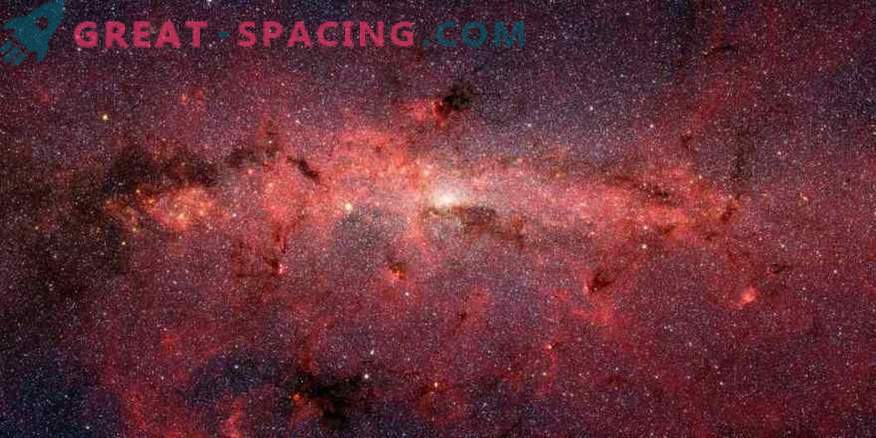
The supermassive black hole in the center of the Milky Way is called Sagittarius A *. This is the closest to us similar object, removed by 25,000 light years. Astronomers have a unique opportunity to explore what happens near the “edge” of a black hole.
Monitoring in the radio and X-ray ranges showed that Sagittarius A * accretes material at extremely low speeds - only a few hundredths of the earth's mass per year. X-rays are constant and most likely due to the rapid movement of electrons in a hot accretion flow associated with a black hole.

Visualization of simulated flare activity and material clouds around a supermassive black hole in the galactic center. The event was observed in x-ray and infrared wavelengths.
Once a day there are outbreaks of emissions that are very different: they are more often shown in the infrared range than X-rays. Some submillimeter flashes were previously associated with IR flashes, although their time was delayed compared to IR events. The problem is that despite an intensive observational campaign, scientists still cannot find the physical mechanisms that cause flares. Astronomers decided to conduct a survey using Spitzer and Chandra observatories. Over 4 years, we managed to collect more than 100 hours of data, among which events in the X-ray and infrared ranges were observed. Most likely, the X-ray event is ahead of infrared radiation by 10-20 minutes.
The observed correlation hints at the existence of a certain physical connection between the events, and a small temporal difference fits in with generally accepted models describing the nature of the outbreaks. Future observations are scheduled for the summer of 2019. If flashes are noticed, they will help to establish new time limits and on the corresponding physical models.











































